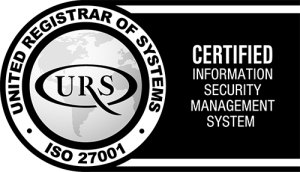Treating Fibrosis and Oxidative Stress
Current status: clinical trials ongoing with various anti-fibrotic compounds
Chronic inflammation results in fibrosis (scar tissue formation). Furthermore the chronic muscle pathology also causes damage to the energy producing organelles in the muscle fibers, the mitochondria. Once this happens, the mitochondria will cause oxidative stress, which in turn results in more fibrosis. Compounds aiming to reduce fibrosis often are targeting inflammation and/or aim to improve mitochondria function.
FibroGen’s FG-3019 (pamrevlumab) is an antibody against CTGF, a growth factor that plays a key role in the production and maintenance of fibrotic tissue. Pamrevlumab is anticipated to prevent CTGF from functioning and in this way reduce the amount of fibrosis formation. Results of an open label study have been published, where treatment might slow down respiratory function decline compared to natural history. A clinical trial to evaluate pamrevlumab in non-ambulatory DMD patients in a placebo-controlled setting has been completed and did not show a difference in the primary endpoint (performance upper limb function). A clinical trial in ambulatory patients is completed. Also there the primary endpoint (north star ambulatory assessment difference) was not reached.
ASP0367 (bocidelpar) is an oral compounds to improve the function and number of mitochondria. It is developed by Astellas and a Phase 1b clinical trial for ambulatory and non ambulatory patients is currently has been terminated for operational reasons.
Ifetroban is an oral compound that aims to reduce inflammation and fibrosis especially in heart by targeting thromboxane receptors. This compound has been shown to reduce inflammation and fibrosis for other diseases. Cumberland therapeutics is conducting a clinical trial in Duchenne patients.
Epicatechin is a molecule that is similar to a hormone produced by the energy producing organelles of the cells (mitochondria) upon exercise. Epicatechin results in the production of mitochondria and improved tissue regeneration in animal models and resulted in reduced fibrosis in muscular dystrophy models. A small pilot study in Becker muscular dystrophy patients was encouraging and showed treatment with epicatechin was well tolerated. A trial in non-ambulant Duchenne patients coordinated by Cardero Therapeutics and UC-Davis is currently completed. Analysis of the results is ongoing. A trial to assess the safety of Coenzyme Q10 (another antioxidant) with and without co-treatment of lisinopril is ongoing (but no longer recruiting) in the US in DMD, Becker and Limb-girdle muscular dystrophy patients.
Additional compounds to reduce fibrosis are evaluated in preclinical studies, e.g. MTB-1 from Astellas which aims to improve the function and number of mitochondria.
Tested but found to be inefficient
Halofuginone
Aim:
To reduce inflammation and fibrosis and improve regeneration.
Background:
Halofuginone is a compound that helps muscle regeneration, reduces inflammation and reduces fibrosis.
Challenge:
Halofuginone is not very well tolerated (gastro-intestinal problems).
Solution:
A different formulation of this compound has been generated (HT-100) by Akashi Therapeutics that is better tolerated.
Clinical trial:
A first clinical trial testing the safety of HT-100 was completed for DMD patients in the USA. This trial was temporarily put on hold because toxicity was observed in dogs at very high doses. However, after further testing and re-evaluation of the data FDA allowed the trial to continue. Preliminary results suggested that HT-100 is well tolerated. An improvement in muscle strength compared to baseline was observed for treated patients. A confirmatory study was initiated but has been suspended after a patient participating in the trial sadly passed away. It was revealed that this patient received a much higher dose of HT-100 than expected. The development of HT-100 for treatment of DMD has been terminated
Idebenone (Puldysa®)
Aim:
To reduce scar formation.
Background:
Due to the loss of dystrophin, skeletal and heart muscle of Duchenne patients are under continuous stress (oxidative stress), which is yet another process that leads to the formation of scar tissue and also impairs the energy production of muscle fibers by the mitochondria (power generators). In muscle this leads to loss of muscle function. In heart, it results in a reduced pump function (the heart becomes “stiffer”). Idebenone helps the mitochondria (power generators of the cells) to generate energy. Idebenone (Raxone) also reduces oxidative stress (it is an antioxidant), in heart and skeletal muscle, to prevent scar tissue formation. Thus, the heart pathology that is seen in many adolescent patients could be delayed or even prevented and skeletal muscle quality should be maintained longer.
Clinical trials:
Santhera has tested idebenone in Duchenne patients and has shown it is safe. A Phase III study has also been performed to assess the effectiveness of Idebenone on pulmonary function, motor function, muscle strength and quality of life in patients not using cortcosteroids. Results show that idebenone was well tolerated and a slower decline in respiratory function was observed for treated patients compared to the placebo group. A placebo-controlled phase 3 study in patients using corticosteroids was initiated. Santhera has filed for marketing authorization with both the European Medicine Agencies (EMA) and Food and Drug Administration (FDA) in 2016. July 2016 the FDA indicated that they need trial results from steroid-treated patients at the time of filing and therefore cannot consider the current application. In 2017 and 2018 the Committee for Human Medicinal Products gave a negative opinion on the use of Idebenone for DMD. In May 2019 Santhera filed for conditional marketing authorization with EMA for the treatment of respiratory dysfunction. However, in October 2020 Santhera announced they stopped the phase 3 clinical trial as an interim analysis had revealed the primary endpoint would not be met. They then also withdrew the marketing authorization application from EMA.
Discontinued:
Pentoxifylline has been tested in a clinical trial and was found not to slow down disease progression and was poorly tolerated by patients. Flavocoxid is another antioxidant that has been tested in a phase 1 trial in Duchenne patients to assess safety.

